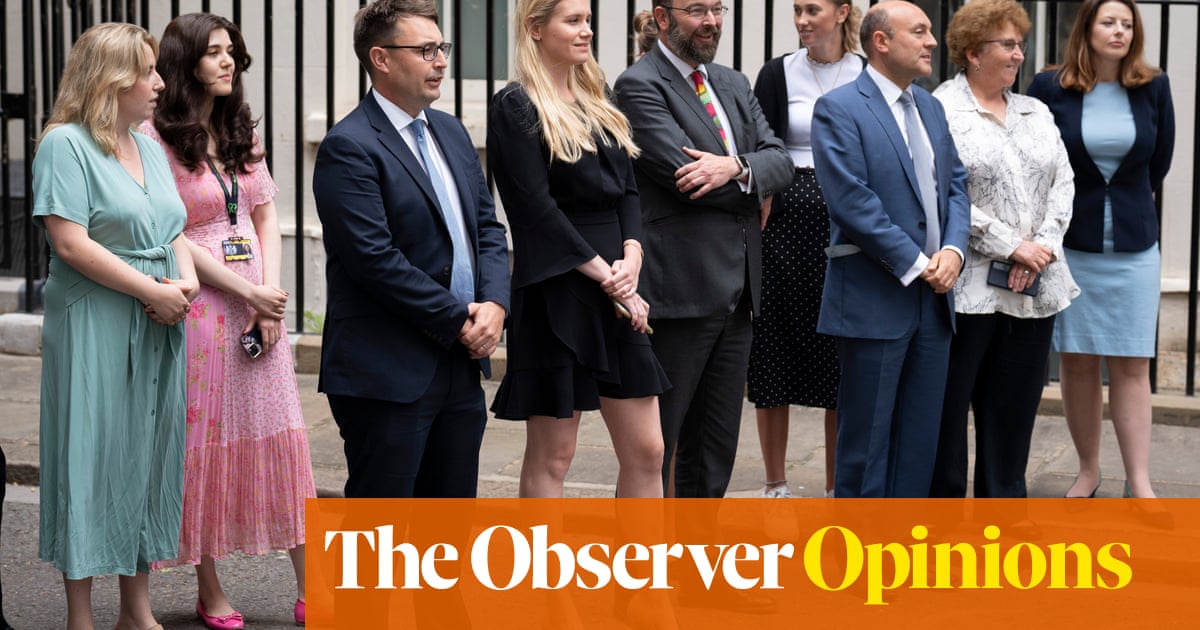
Asia expert Ezra Vogel published his influential book “Japan as Number One” 40 years ago. At the time, he argued that the US needed to adopt aspects of Japan’s supposedly superior economic system if it wanted to compete with the East Asian powerhouse. Policymakers in Washington were wise to ignore him. While Japan sank into a financial crisis and three decades of malaise, the US has continued to prosper.
As officials from the two countries meet this week to begin hashing out a bilateral free-trade pact, US President Donald Trump seems to be reconsidering Vogel’s advice. His preferred policies would essentially emulate those that underpinned not just Japan’s rise but its subsequent fall. If he persists, the US economy could suffer the same fate.
Trump’s antipathy to immigration, for instance, is rivaled only by Japan’s. Nonsensically declaring the US “full,” the US president ignores the fact that America’s acceptance of foreigners is a key reason why the country has avoided a Japan-like aging catastrophe. Depriving the US of new workers would hold back growth just as it has in Japan.
Trump’s protectionist bent also mirrors Japan’s historically insular attitude. The consequences for Japan have been dire. Over the years, its government’s defense of certain sectors -- most of all agriculture -- dampened productivity gains and punished households with higher prices.
Japan’s policymakers and business leaders also remained wedded for far too long to a make-it-and-export-it strategy, failing to adjust to a changing world economy. Granted, some Japanese companies excel at high-end manufacturing. But Tokyo also keeps too many zombie industrial firms afloat, while not doing nearly enough to encourage entrepreneurs in new sectors. That’s left corporate Japan vulnerable to competition from a rising China.
Trump’s penchant for protecting favored industries, such as steel and washing machines, has similarly hurt consumers and businesses alike. And he has been intent on promoting the industries of the past -- such as electronics assembly and car plants -- rather than the future.
Even Trump’s recent hounding of the Federal Reserve bears parallels to the path of Japan’s monetary policy. Frustrated by current Fed management, whom he blames for threatening growth by hiking benchmark interest rates, Trump is now trying to pack the board with loyalists, at least one of whom (Stephen Moore) shares his easy-money views.
Japan has done very much the same. The Bank of Japan’s main lending rate was set at zero 20 years ago, and with a couple brief interruptions, has generally remained there. Even that wasn’t enough to please Prime Minister Shinzo Abe, who in 2013 placed a like-minded policymaker, Haruhiko Kuroda, in charge of the institution. The new governor unleashed an even larger torrent of cash into the economy using unorthodox strategies, including negative interest rates.
The results have been questionable at best. The Bank of Japan’s balance sheet swelled well beyond those of the Fed or European Central Bank relative to the size of the economy, in the process distorting the entire market for Japanese government bonds. Yet Japan’s gross domestic product, at current prices, has barely budged since the central bank first introduced its zero-rate program. By contrast, the US’s more than doubled over that same period.
Nor did Kuroda’s frothy wave of yen boost inflation to the bank’s 2 percent target or stir wages, which were flat in real terms last year. Meanwhile, the low borrowing costs have allowed a spendthrift state to dodge fiscal reality. Over the past two decades, Japan’s government debt relative to national output has doubled to almost 240 percent, according to the International Monetary Fund. Perhaps matters would have been worse without the BOJ’s largesse. Still, the lesson Trump should learn from Japan is that monetary stimulus only goes so far.
Ironically, even slow-changing Japan has woken to the danger of its outdated policies. Abe is welcoming more foreign workers into the country and has signed major free-trade pacts, including a revised Trans-Pacific Partnership, which Trump rejected.
The divergent policy directions of the US and Japan may even give Tokyo a leg up in this week’s trade talks. While Trump has kept the US on the sidelines, American farmers have lost out in the Japanese market to competitors in the renamed TPP. Meanwhile, obsessed with automobiles, Trump will likely try to curtail Japanese car exports to the US, which would hurt the American consumer again while achieving minimal gains in actual trade.
Japan, sadly, stands as a stark reminder of the economic damage that can be done by clinging to an idealized past rather than preparing for the future. If Trump wants to copy Japan, he should mimic its recent reforms, not its past missteps.(Bloomberg)












